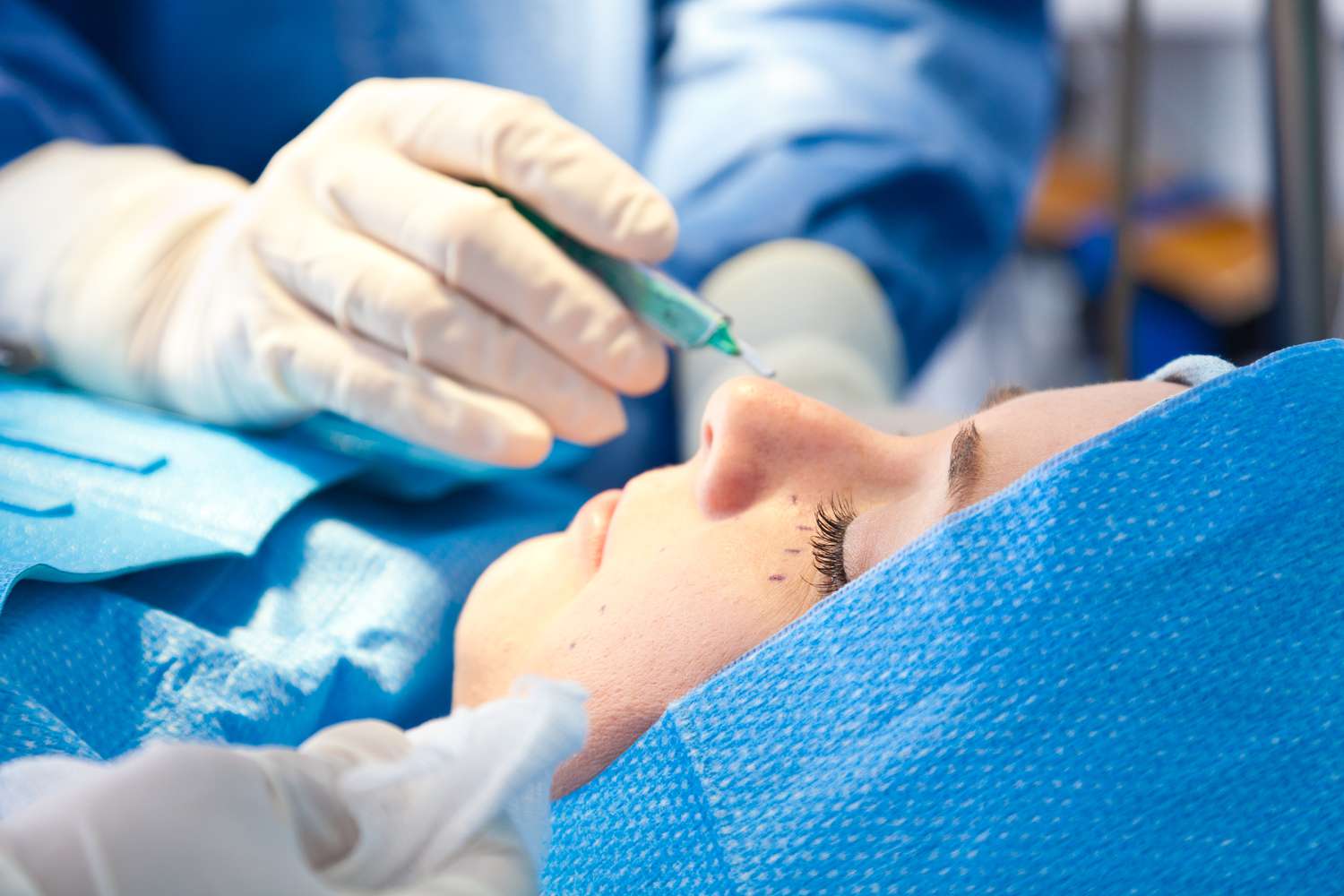- DEPARTMENT
- MEDICAL ONCOLOGY
- SURGICAL ONCOLOGY
- NEPHROLOGY
- UROLOGY
- MEDICAL GASTROENTEROLOGY
- SURGICAL GASTROENTEROLOGY
- NEUROLOGY
- NEURO SURGERY
- PEDIATRIC SURGERY
- PLASTIC SURGERY
- CARDIOLOGY
- GENERAL SURGERY
- ORTHOPEDICS
- OBSTETRICS & GYNECOLOGY
- GENERAL MEDICINE
- PEDIATRICS
- PULMONOLOGY
- DERMATOLOGY
- ENT
- MAXILLOFACIAL SURGEON
- DENTAL SCIENCES
- ANAESTHESIA & CRITICAL CARE
- EMERGENCY MEDICINE & TRAUMA
- PAIN MANAGEMENT
- PATHOLOGY
- PHYSIOTHERAPY
PLASTIC SURGERY

Dr.Ashok Reddy
MBBS, DNB, MCH
Plastic surgery is a specialized field of medicine dedicated to the restoration, reconstruction, or alteration of the human body through surgical procedures. Plastic surgeons possess advanced training and expertise in aesthetic and reconstructive surgery, allowing them to address a diverse range of cosmetic concerns, congenital anomalies, traumatic injuries, and functional impairments. In this comprehensive exploration, we will delve into the multifaceted realm of plastic surgery, examining its history, significance, procedures, and advancements.
Understanding Plastic Surgery
Early Beginnings
The origins of plastic surgery can be traced back to ancient civilizations, where rudimentary techniques were employed to repair facial injuries, reconstruct noses, and restore form and function to damaged tissues. The term “plastic” is derived from the Greek word “plastikos,” meaning to mold or shape, reflecting the transformative nature of the specialty. Throughout history, plastic surgery has evolved from primitive methods to sophisticated techniques, driven by innovations in surgical technology, anatomical knowledge, and medical science.
Classification of Plastic Surgery
Plastic surgery can be broadly categorized into two main branches:
Reconstructive Surgery: Reconstructive surgery aims to restore normal form and function to congenitally malformed structures, injured tissues, or defects resulting from trauma, disease, or surgery. It encompasses procedures such as breast reconstruction, facial reconstruction, hand surgery, microsurgery, and burn reconstruction.
Aesthetic (Cosmetic) Surgery: Aesthetic surgery focuses on enhancing the appearance of normal body structures to improve symmetry, proportion, and aesthetic harmony. It includes procedures such as breast augmentation, rhinoplasty, abdominoplasty, facelift, liposuction, and injectable treatments (e.g., Botox, dermal fillers).
Core Principles of Plastic Surgery
Plastic surgery is guided by several core principles that underscore its practice and philosophy:
Restoration: Plastic surgeons aim to restore form and function to damaged or deficient tissues, organs, or body parts, helping patients regain normal appearance, function, and quality of life following injury, disease, or congenital anomalies.
Reconstruction: Reconstruction involves rebuilding or reshaping tissues to repair defects, deformities, or disfigurements resulting from trauma, cancer resection, congenital abnormalities, or previous surgical interventions.
Revision: Revision surgery addresses complications, imperfections, or unsatisfactory outcomes following primary procedures, offering corrective interventions to optimize aesthetic results, functional outcomes, and patient satisfaction.
Innovation: Plastic surgery embraces innovation and technological advancements to refine surgical techniques, enhance patient safety, and achieve superior outcomes in both reconstructive and aesthetic procedures.
Scope of Practice
Plastic surgery encompasses a wide range of surgical procedures and interventions, addressing various anatomical regions and clinical concerns:
Breast Reconstruction: Breast reconstruction restores breast shape, volume, and contour following mastectomy or lumpectomy for breast cancer, utilizing techniques such as tissue expansion, autologous flap reconstruction (e.g., DIEP flap, TRAM flap), and implant-based reconstruction.
Facial Reconstruction: Facial reconstruction aims to restore facial aesthetics and function following traumatic injuries, congenital deformities, or ablative surgery for head and neck cancers, involving procedures such as facial fracture repair, microvascular free tissue transfer, and scar revision.
Hand Surgery: Hand surgery addresses traumatic injuries, degenerative conditions, and congenital anomalies affecting the hands and upper extremities, including fractures, tendon injuries, nerve injuries, Dupuytren’s contracture, and congenital hand deformities.
Microsurgery: Microsurgery involves intricate surgical techniques to repair and reconstruct small blood vessels, nerves, and tissues using a surgical microscope and specialized instruments, enabling complex procedures such as free tissue transfer, replantation, and composite tissue transplantation.
Burn Reconstruction: Burn reconstruction aims to restore skin integrity, function, and aesthetics following thermal, chemical, or electrical burns, utilizing techniques such as skin grafting, tissue expansion, laser therapy, and scar revision to optimize healing and minimize functional impairment.
Anesthetic Techniques
Anesthetic techniques vary depending on the type of surgery, patient factors, and surgical preferences, with options ranging from general anesthesia to regional anesthesia and neuraxial anesthesia. General anesthesia involves the administration of intravenous and inhalational anesthetic agents to induce unconsciousness, suppress reflexes, and facilitate endotracheal intubation for airway management. Regional anesthesia involves the selective blockade of peripheral nerves or nerve plexuses to provide analgesia and anesthesia to specific anatomical regions, such as the extremities, abdomen, or pelvis. Neuraxial anesthesia, including spinal anesthesia and epidural anesthesia, involves the injection of local anesthetic agents into the spinal canal or epidural space to block sensory and motor nerve transmission, producing analgesia and anesthesia for lower abdominal, pelvic, or lower extremity surgery.
Patient Evaluation and Consultation
Patient evaluation and consultation are integral components of the plastic surgery process:
Medical History: Plastic surgeons conduct a thorough review of the patient’s medical history, including previous surgeries, medical conditions, allergies, medications, and lifestyle factors that may impact surgical outcomes.
Physical Examination: A comprehensive physical examination is performed to assess anatomical features, skin quality, tissue laxity, asymmetries, and other factors relevant to the planned surgical procedure.
Treatment Goals: Plastic surgeons discuss the patient’s aesthetic goals, expectations, concerns, and motivations for seeking surgery, ensuring realistic expectations and informed decision-making.
Surgical Planning: Based on the patient’s evaluation and goals, plastic surgeons develop a customized treatment plan that addresses specific anatomical concerns, incorporates appropriate surgical techniques, and outlines preoperative preparations, postoperative care, and expected outcomes.
Surgical Techniques and Innovations
Plastic surgery encompasses a myriad of surgical techniques and innovations:
Flap Surgery: Flap surgery involves the transfer of tissue from one body site to another along with its blood supply, allowing for the reconstruction of complex defects and wounds with viable, well-vascularized tissue
